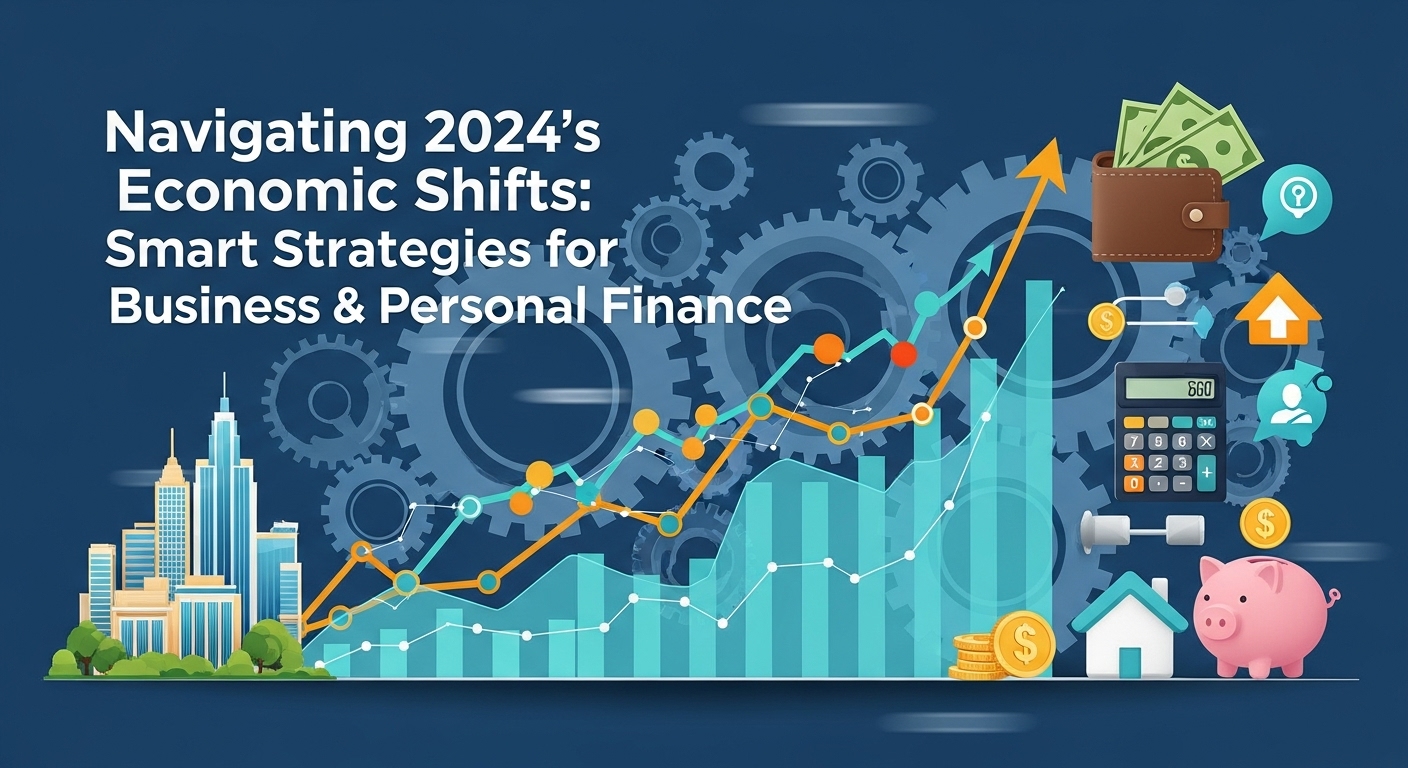Understanding the 2024 Economic Landscape
As we navigate 2024, the economic environment feels like a complex tapestry woven with threads of opportunity and uncertainty. The echoes of past disruptions continue to influence our present, while new trends emerge, demanding our attention. To build a resilient financial future, both personally and professionally, we must first understand the key forces at play. This isn’t about predicting the future with a crystal ball; it’s about recognizing the currents so we can steer our ships effectively. The worlds of finance & business are more interconnected than ever, and a shift in one area often creates ripples in another.
The Lingering Effects of Inflation
While headlines may suggest that inflation is cooling, its impact is far from over. For months, we’ve seen the cost of everything from groceries to gasoline climb, eroding the purchasing power of our hard-earned money. In 2024, this means that even if your income has increased, you might feel like you’re treading water. The ‘real’ value of your savings can diminish if your returns don’t outpace the inflation rate. This lingering pressure makes meticulous budgeting and smart investment choices not just good habits, but essential survival tools.
Interest Rate Fluctuations and Their Impact
Central banks around the globe have been using interest rates as a primary tool to combat inflation. While higher rates can help cool an overheating economy, they have direct consequences for consumers and businesses. For individuals, this translates to more expensive mortgages, car loans, and credit card debt. Conversely, savers might see slightly better returns on high-yield savings accounts. For businesses, higher borrowing costs can stifle expansion plans and squeeze profit margins. Understanding the direction of interest rates is crucial for making informed decisions about debt, savings, and investment in both your personal finance & business operations.
The Rise of AI and Automation
The technological revolution, spearheaded by Artificial Intelligence (AI), is no longer a distant sci-fi concept; it’s a present-day economic force. AI and automation are reshaping industries, creating unprecedented efficiencies, and, admittedly, causing anxiety about job displacement. This dual-edged sword presents immense opportunities for businesses to innovate and for individuals to upskill. Ignoring this shift is not an option. Embracing it, however, can unlock new revenue streams, career paths, and a significant competitive advantage.
Smart Strategies for Personal Finance
With a clearer picture of the economic landscape, we can turn our focus to actionable strategies for our personal finances. Proactive management is the key to not just surviving but thriving in 2024. It’s about taking control, making deliberate choices, and building a buffer against uncertainty.
Re-evaluating Your Budget and Savings Goals
The ‘set it and forget it’ approach to budgeting is a relic of a more stable past. In 2024, your budget must be a living, breathing document. Start by tracking your expenses for a month to see where your money is actually going—you might be surprised. Use this data to create a realistic budget, perhaps following a flexible framework like the 50/30/20 rule (50% for needs, 30% for wants, 20% for savings/debt). More importantly, review it quarterly. Did your utility bills go up? Do you need to allocate more for groceries? Adjust accordingly. Your savings goals should also be specific: are you saving for a down payment, retirement, or a new car? Clear goals make it easier to stay motivated.
Debt Management in a High-Interest Environment
High interest rates make debt a heavy anchor. Your top priority should be to tackle high-interest debt, particularly credit card balances. Consider strategies like the ‘avalanche’ method (paying off the highest-interest debt first) or the ‘snowball’ method (paying off the smallest balance first for a psychological win). Look into balance transfer cards with 0% introductory APRs or personal loans for debt consolidation, but be sure to read the fine print. The less you pay in interest, the more money you have to build wealth.
Investing with a Long-Term Perspective
Market volatility can be unnerving, tempting even seasoned investors to make emotional decisions. The wisest course of action is almost always to stay the course. Don’t try to time the market. Instead, focus on consistent contributions to a diversified portfolio. Consider a mix of stocks, bonds, and perhaps inflation-resistant assets like Treasury Inflation-Protected Securities (TIPS) or real estate investment trusts (REITs). If you’re unsure where to start, low-cost index funds or ETFs offer broad market exposure and are an excellent choice for most long-term investors.
Agile Strategies for Business Success
For entrepreneurs and business leaders, agility is the name of the game in 2024. The economic shifts that challenge personal finance also create a dynamic and competitive business environment. Success hinges on the ability to adapt, innovate, and maintain a laser focus on financial health.
Optimizing Cash Flow and Managing Expenses
Cash flow is the lifeblood of any business. In a tight economy, managing it becomes paramount. Scrutinize every expense. Are there subscriptions you no longer use? Can you renegotiate terms with suppliers for better pricing or payment schedules? Implement technology to automate invoicing and payment reminders to reduce delays in receivables. Maintaining a healthy cash reserve is your business’s equivalent of a personal emergency fund—it provides the cushion needed to weather unexpected downturns or seize sudden opportunities.
Embracing Digital Transformation and AI
Businesses that leverage technology will outperform those that don’t. This goes beyond simply having a website. Use AI-powered tools for customer relationship management (CRM) to personalize marketing efforts. Implement automation in your supply chain to reduce costs and improve efficiency. Use data analytics to understand customer behavior and make smarter inventory decisions. Investing in digital transformation is no longer a luxury; it’s a critical component of a modern finance & business strategy.
Diversifying Revenue Streams
Relying on a single product, service, or client is a risky proposition. Explore ways to diversify your income. Could you offer a complementary service to your existing product? Can you create a digital product, like an online course or e-book, based on your expertise? Could you expand into a new geographic market? Diversification creates stability and makes your business more resilient to market shocks affecting a single sector.
Focusing on Customer Retention
In a challenging economic climate, your existing customers are your greatest asset. It is significantly more cost-effective to retain a customer than to acquire a new one. Double down on providing exceptional customer service. Implement a loyalty program to reward repeat business. Actively seek feedback and use it to improve your offerings. A loyal customer base provides a stable foundation of revenue that is essential for navigating uncertain times.
Conclusion: Building Your Resilient Financial Future
The economic shifts of 2024 present a complex mix of challenges and opportunities for both personal finance & business endeavors. The path forward is not about finding a magic bullet, but about embracing a mindset of adaptability, continuous learning, and proactive planning. By understanding the broader economic forces, implementing smart personal finance habits, and adopting agile business strategies, you can do more than just weather the storm—you can set a course for long-term prosperity. Now is the time to review your budget, analyze your business’s cash flow, and ask the critical questions. Your future self will thank you for the deliberate actions you take today.

